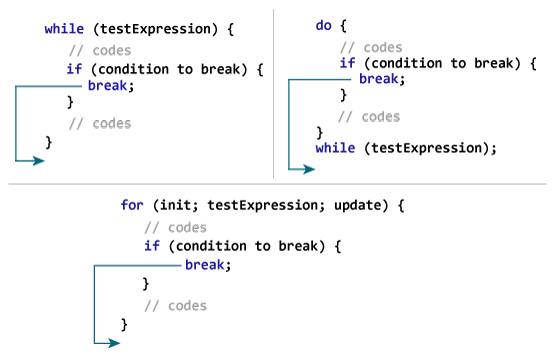The break statement ends the loop immediately when it is encountered. Its syntax is:
break;The break statement is almost always used with if...else statement inside the loop.
How does the break statement work?

Example: break statement
// Program to calculate the sum of numbers (10 numbers max)
// If the user enters a negative number, the loop terminates
#include <stdio.h>
int main() {
int i;
double number, sum = 0.0;
for (i = 1; i <= 10; ++i) {
printf("Enter a n%d: ", i);
scanf("%lf", &number);
// if the user enters a negative number, break the loop
if (number < 0.0) {
break;
}
sum += number; // sum = sum + number;
}
printf("Sum = %.2lf", sum);
return 0;
}Output
Enter a n1: 2.4 Enter a n2: 4.5 Enter a n3: 3.4 Enter a n4: -3 Sum = 10.30
This program calculates the sum of a maximum of 10 numbers. Why a maximum of 10 numbers? It’s because if the user enters a negative number, the break statement is executed. This will end the for loop, and the sum is displayed.
In C, break is also used with the switch statement. This will be discussed in the next tutorial.
